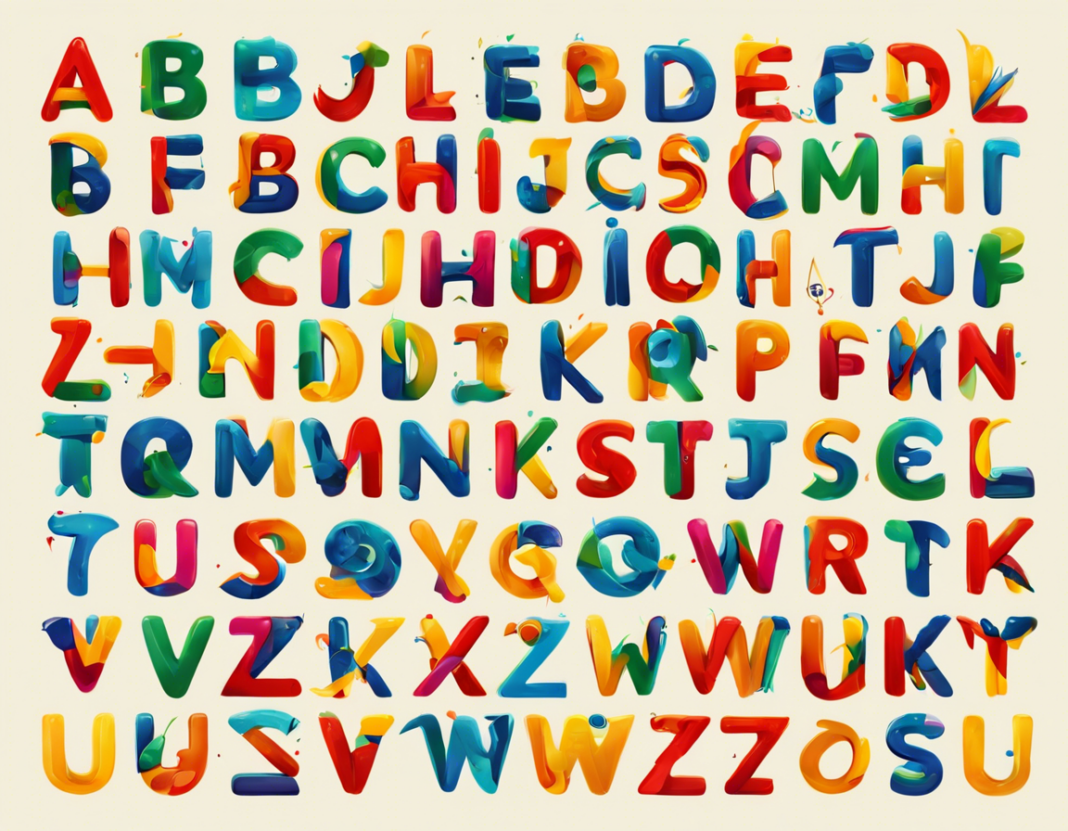Are you ready to dive into the fascinating world of alphabets? Most of us take the alphabet for granted, as we use it every day to communicate through writing and reading. However, the alphabet is more than just a tool for language; it is a rich tapestry of history, language development, and cultural significance. In this article, we will take a journey through the alphabet, exploring its origins, fun facts, and significance in various languages and cultures. From A to Z, let’s uncover the hidden gems of the alphabet.
The Origins of the Alphabet
The alphabet as we know it has evolved over thousands of years, with its roots tracing back to ancient civilizations. Here are some key points about the origins of the alphabet:
1. Phoenician Influence:
- The Phoenicians, an ancient civilization in the Eastern Mediterranean, are credited with developing the first phonetic alphabet around 1050 BCE.
- Their alphabet consisted of consonants and was the basis for many modern alphabets, including Greek and Latin.
2. Greek Alphabet:
- The Greek alphabet, derived from the Phoenician alphabet, introduced the concept of vowels, which were previously absent.
- It is the ancestor of the Latin alphabet, which is the basis for many Western European alphabets.
3. Latin Alphabet:
- The Latin alphabet, originating from the Etruscan alphabet, was used by the ancient Romans and spread throughout the Roman Empire.
- It is the basis for the modern English alphabet and is widely used in various languages worldwide.
Fun Facts About the Alphabet
The alphabet is not just a set of letters; it is a window into history, linguistics, and even pop culture. Here are some fun facts about the alphabet that might surprise you:
1. Letter “E”:
- The letter “E” is the most commonly used letter in the English language, making it essential for communication.
- It appears in approximately 11% of all English words.
2. Longest Word:
- The longest word in the English language that can be created using the letters of one alphabet is “uncopyrightable.”
- This means that the word is not protected by copyright law.
3. Pangram Sentences:
- A pangram is a sentence that contains every letter of the alphabet at least once.
- An example of a pangram is: “The quick brown fox jumps over the lazy dog.”
4. Acrophobia:
- Acrophobia is the fear of alphabets or of spelling, writing, or reading in public.
- It is a rare phobia but can be a significant challenge for individuals who experience it.
Significance of the Alphabet in Different Languages
The alphabet plays a crucial role in shaping languages and cultures around the world. Here are some interesting insights into the significance of the alphabet in various languages:
1. Arabic Alphabet:
- The Arabic alphabet consists of 28 letters and is written from right to left.
- It is used for writing the Arabic language and is also employed in other languages such as Persian and Urdu.
2. Chinese Characters:
- Chinese characters, unlike alphabetic scripts, are logograms that represent words or meaningful elements.
- The complexity of Chinese characters adds to the richness and depth of the Chinese language.
3. Cyrillic Alphabet:
- The Cyrillic alphabet is used in various Slavic languages, such as Russian, Bulgarian, and Serbian.
- It was developed in the 9th century and is based on the Greek alphabet with additional letters to represent Slavic sounds.
Alphabetical FAQs
1. What is the youngest alphabet in the world?
- The modern Filipino alphabet, also known as the Abakada or Filipino script, is considered one of the youngest alphabets in the world, officially adopted in 1987.
2. How many alphabets are there in total?
- There are approximately 26 alphabets used worldwide, with variations in scripts and letters depending on the language.
3. Which language has the shortest alphabet?
- The Rotokas language spoken in Papua New Guinea has only 12 letters in its alphabet, making it one of the shortest alphabets in use.
4. Are there alphabets without vowels?
- Yes, some scripts, such as Arabic, Hebrew, and Inuktitut, are abjads, which primarily represent consonants with limited or no vowel representation.
5. Who created the Braille alphabet?
- The Braille alphabet was invented by Louis Braille, a French educator who was blind himself. He developed the tactile writing system in the 19th century.
Explore the alphabet beyond its basic function of communication, and you will uncover a world of history, linguistics, and cultural richness. Whether you are fascinated by ancient scripts or the diversity of modern alphabets, the evolution of writing systems is a testament to human ingenuity and creativity. Next time you write a letter or type a message, remember the centuries of innovation that have shaped the letters on your screen.
